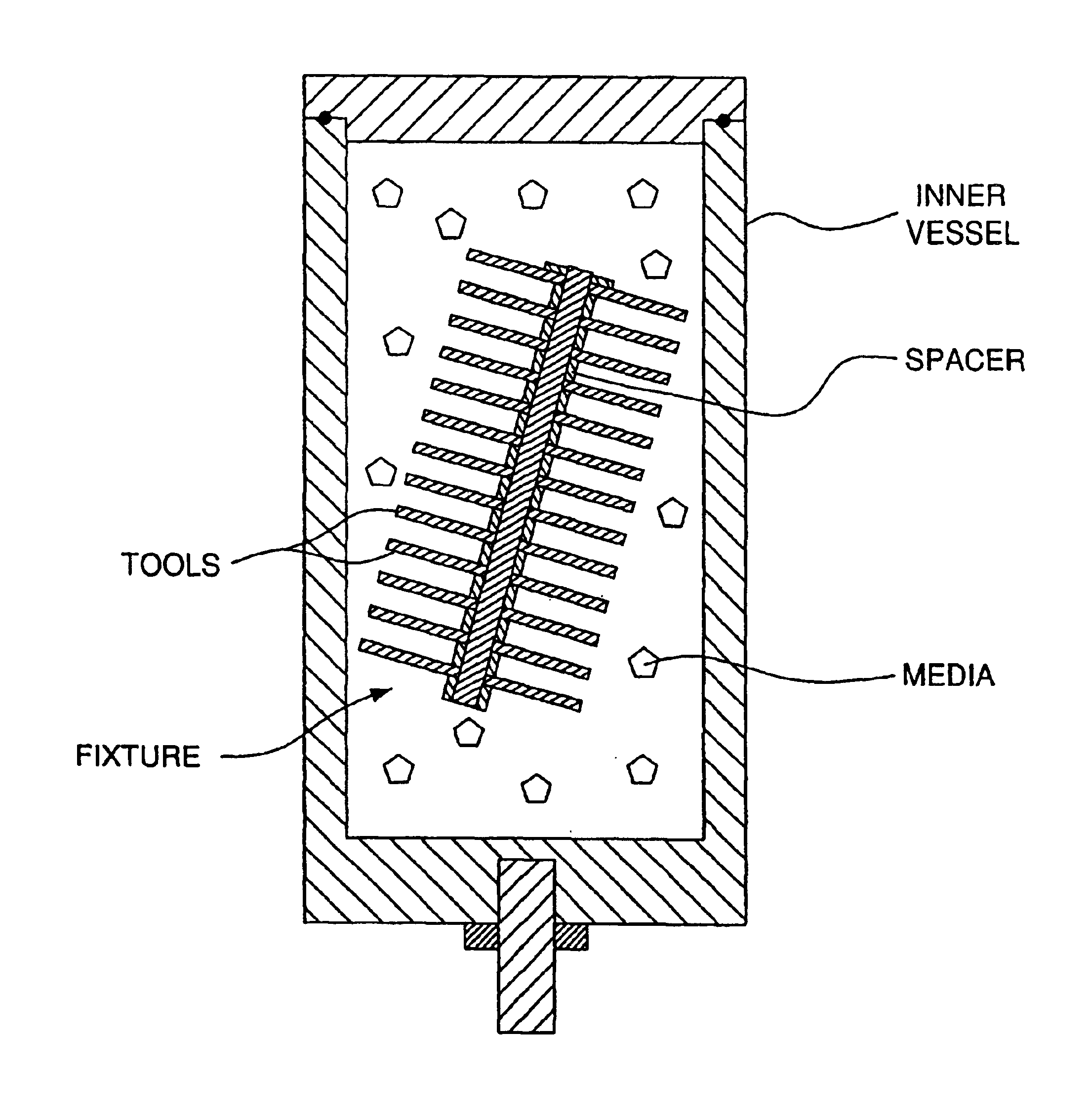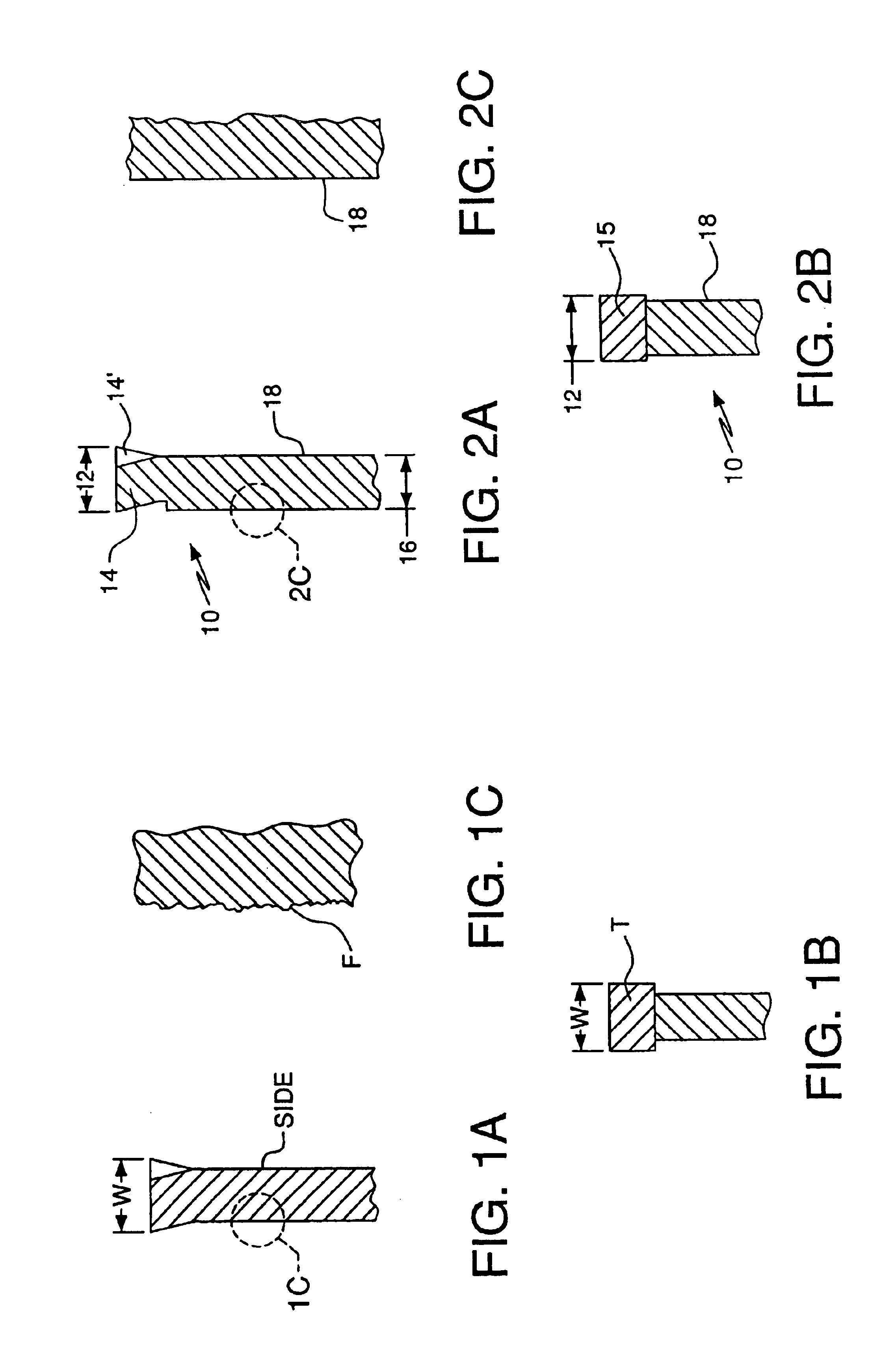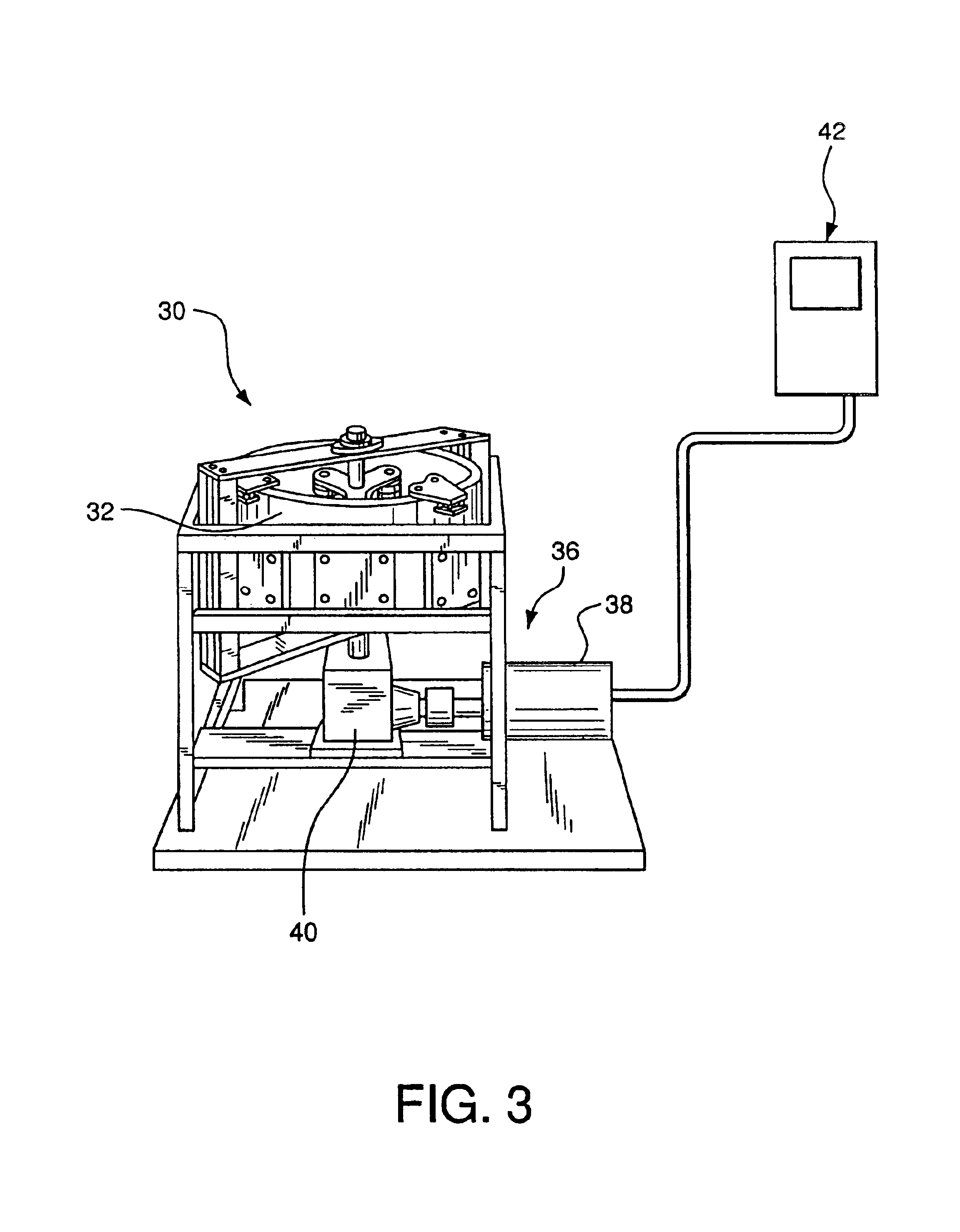Method of manufacturing a tool using a rotational processing apparatus
a technology of rotation processing and manufacturing method, which is applied in the field of tools, can solve the problems of limiting the speed and ease of manufacturing parts, affecting the life of tools, and cutting tools being worn
- Summary
- Abstract
- Description
- Claims
- Application Information
AI Technical Summary
Benefits of technology
Problems solved by technology
Method used
Image
Examples
Embodiment Construction
For the purpose of illustrating the invention, there is shown in the drawings one or more embodiments of the invention which are presently preferred; it being understood, however, that this invention is not limited to the precise arrangements and instrumentalities shown.
FIG. 1A illustrates a partial cross-sectional view of a conventional saw blade. As discussed above, a conventional saw blade includes a cutting tip width W which defines the spacing or clearance that will result between the cut formed in the workpiece and the blade. The cutting tip width W is defined by either the overall width of the offset teeth (called spring-setting and shown in FIG. 1A), or the actual width of the straight cutting tip T (called swage-setting and shown in FIG. 1B). A schematic representation of an enlarged detailed view of the side of the saw blade is shown in FIG. 1A, illustrating a conventional brushed steel finish F formed on the blade portion of the saw blade. A brushed steel finish is genera...
PUM
| Property | Measurement | Unit |
|---|---|---|
| Time | aaaaa | aaaaa |
| Speed | aaaaa | aaaaa |
| Abrasive | aaaaa | aaaaa |
Abstract
Description
Claims
Application Information
 Login to View More
Login to View More - R&D
- Intellectual Property
- Life Sciences
- Materials
- Tech Scout
- Unparalleled Data Quality
- Higher Quality Content
- 60% Fewer Hallucinations
Browse by: Latest US Patents, China's latest patents, Technical Efficacy Thesaurus, Application Domain, Technology Topic, Popular Technical Reports.
© 2025 PatSnap. All rights reserved.Legal|Privacy policy|Modern Slavery Act Transparency Statement|Sitemap|About US| Contact US: help@patsnap.com



